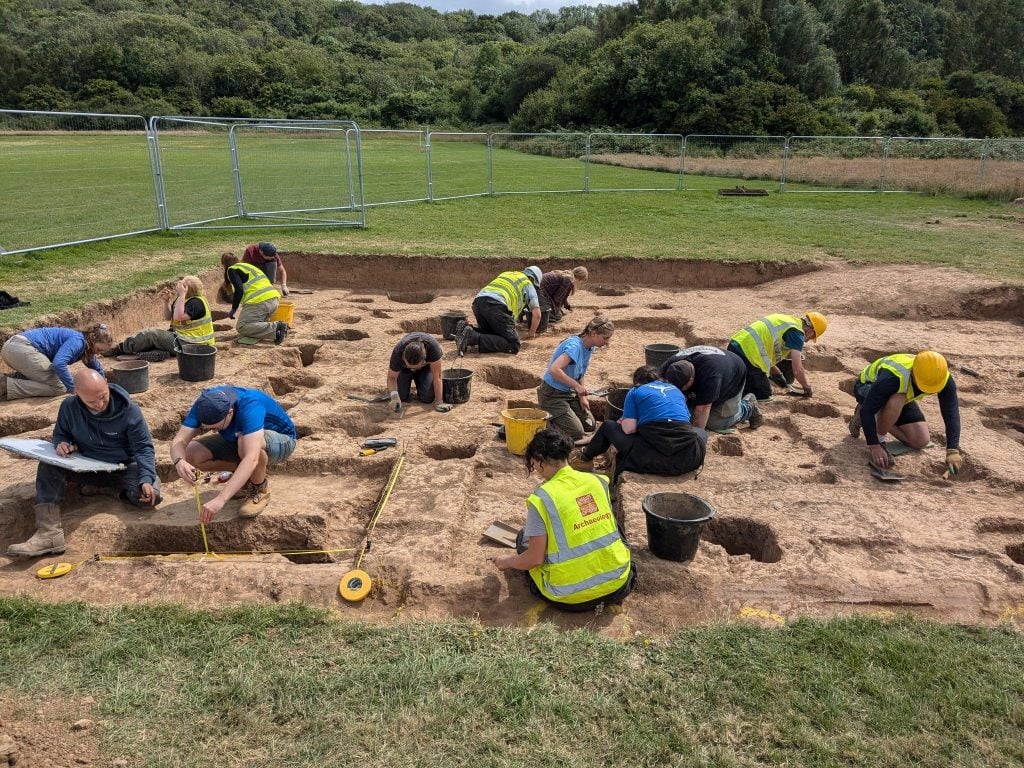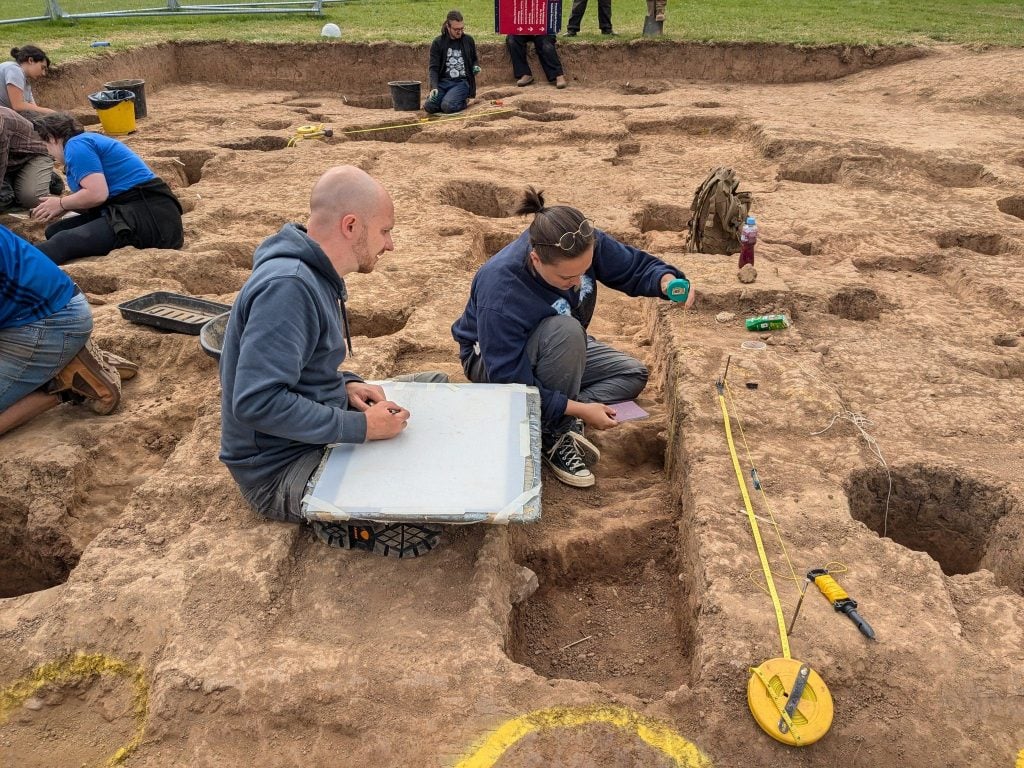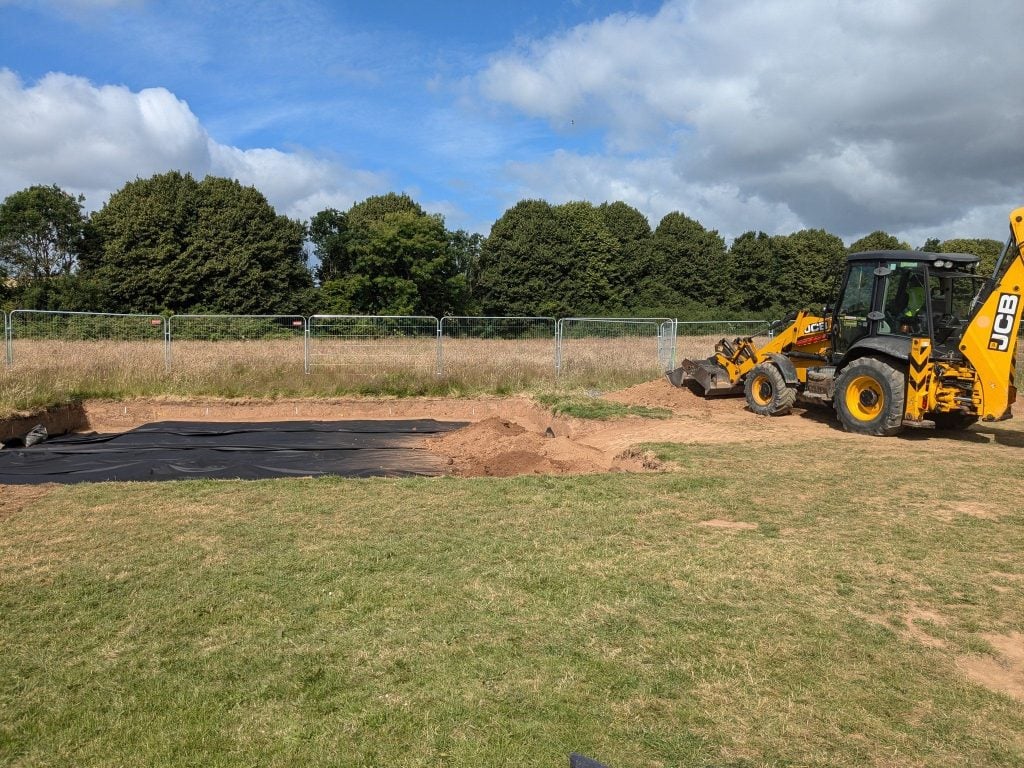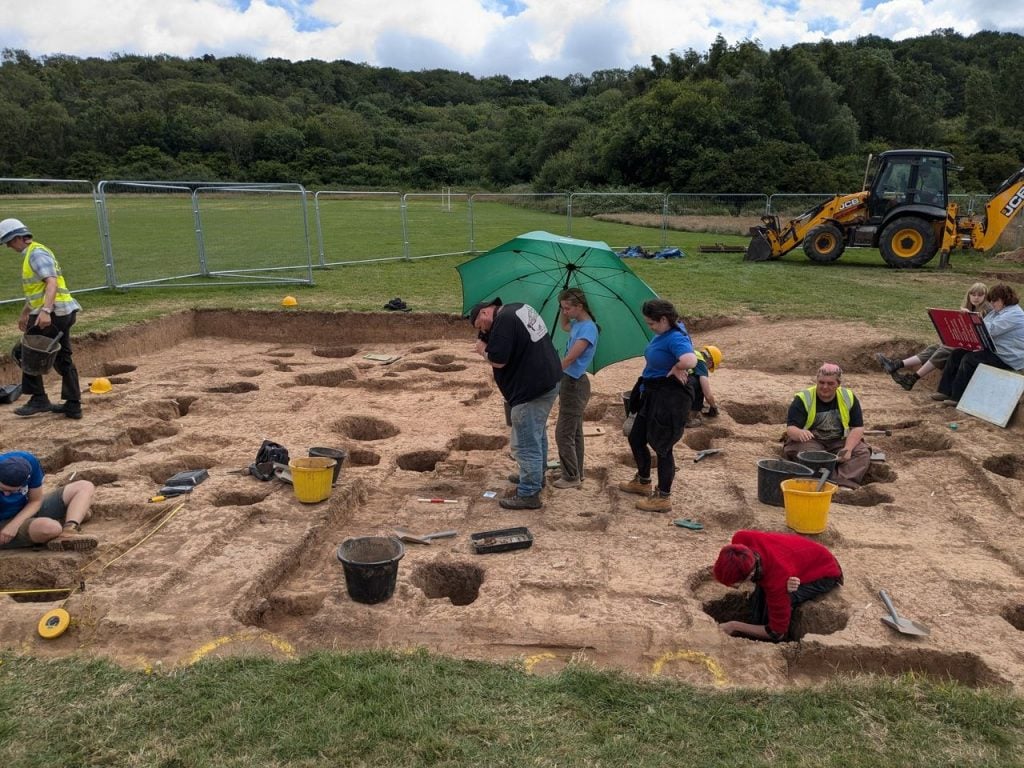Art World
Evidence of the Oldest Houses in Wales Turns Up in a Sports Field
The floors in the houses are in rare condition because the field has never been plowed.

The floors in the houses are in rare condition because the field has never been plowed.

Adnan Qiblawi

Soccer players in Cardiff, Wales would have never guessed that there were relics from the Bronze Age buried just beneath their cleats.
A large open space in in Trelai Park that had been used as a playing field since 1933 yielded a treasure trove of prehistoric artifacts during a 2022 land survey conducted by a local school that was building a sports field in a corner of the park. Upon the archaeological site’s discovery, the Caerau and Ely Rediscovering Heritage Project (CAER), an organization promoting community involvement in archaeological research, began collaborations with Cardiff University to excavate the area.

Archaeologists working to unearth evidence in Cardiff, U.K. Photo courtesy of CAER Heritage.
Archaeologists initially expected the discovery would shed new light on everyday life in the region between the late Iron Age and early Roman Era. To their surprise, unearthed shards from a clay pot dated the site to the Bronze Age, around 1500 B.C.E.
The excavation was soon found to constitute two Bronze Age roundhouses—circular dwellings, typically featuring thatched roofs, that were made up of walls built using wooden or stone posts and stuffed with wattle-and-daub, a mixture of twigs, earth, and clay. The roundhouses have been dubbed the oldest houses in Cardiff.

The seemingly innocuous sports field turned up many ancient treasures. Photo courtesy of CAER Heritage.
Recently, a clay furnace was uncovered, much to the thrill of onlookers, who cheered at the discovery. The furnace may have been used by a smith who created tools, weapons, or even jewelry. It is regarded as a find of international significance, believed to be only the second ever of its type to be discovered in the UK, thought to predate even the roundhouses. Soon after the discovery of the furnace, researchers uncovered an urn that experts believe may contain the ashes of the very smith who worked the furnace.
In another area of the site, evidence emerged that indicates the preparation of cereals. In a third area, a discovery of flints indicated that tools may have been made there. Researchers are particularly excited about the houses’ floors, which are remarkably well-preserved because the field they were found in has never been plowed. Further evidence suggests the possibility of a timber circle under the houses around which people from the community may have gathered to warm themselves by a hearth.

Archaeologists working to unearth evidence in Cardiff, U.K. Photo courtesy of CAER Heritage.
Researchers and locals alike are thrilled at the opportunity to learn more about the lifestyles of the region’s ancient ancestors.
According to the Guardian, one local volunteer at the site, Scott Bees, a former postal worker turned archaeology student, said, “The biggest thing I get from it is finding out where we all come from, where this community comes from.”